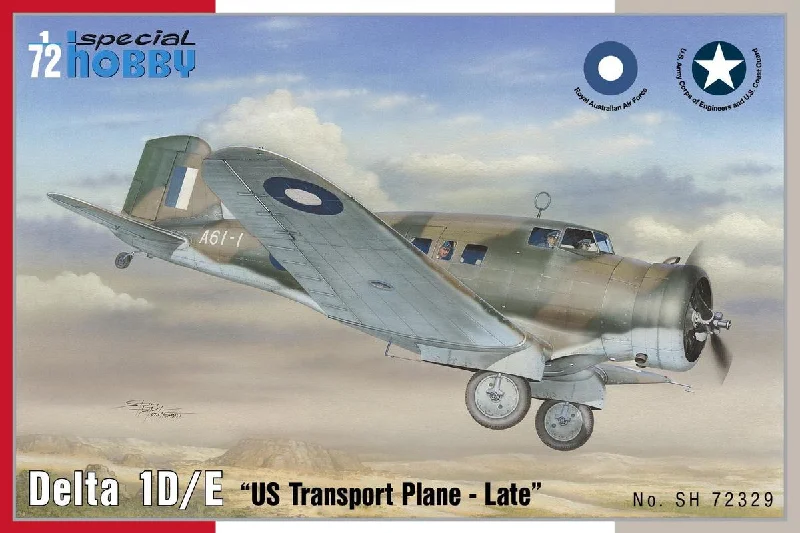Details:
Northrop Delta 1D/E In 1932 Jack K.Northrop, a famous american aircraft designer, followed his earlier and successful cargo and mail types the Alfa and Gamma and designed a new one, named the Delta. It was a all-metal, single engined low-wing monoplane with fixed undercarriage covered in spats. The type was intended to be used on short domestic routes and was built in several versions, differing by their powerplant and also the shape of the pilot's cockpit canopy. First versions known as the Delta 1A, 1B and 1C featured narrow canopy housing only one pilot. Following versions, the 1D and 1E already had a wider cockpit enabling a crew of two to sit there and they also had a much massive dorsal section of the fuselage. Unfortunatelly, one of the first Delta 1A machines crashed in Mexicowhile being delivered to the customer. This accident was also one of the reasons for the US government to ban the usage of single engined types for regular passenger transport. Aircraft already produced were bought by private subjects or used by companies for business trip purposes. One of the Delta 1Ds, with construction number 74, was used by the US Coast Guard and later it was handed over to the US Corps of Engineers and flown in Ethiopia (Africa) during the Second World War. Delta 1D c/n42 first saw service with Ellsworth's Antarctica Flight, then was bought by the Australian govenrment and following the outbreak of WWII it was transferred to the RAAF. Some other Deltas were lucky to see war service even earlier as three of them were acquired by the Spanish government, though two of them fell into the hands of Spanish Nationalist Forces making the Delta the type to fight or be used on both sides of the conflict. In 1936, Canada bought licence rights, partially compensating for Northrop's business failure with the type. The Canadian machines were produced by Vickers company in versions Mk.I to Mk.III

